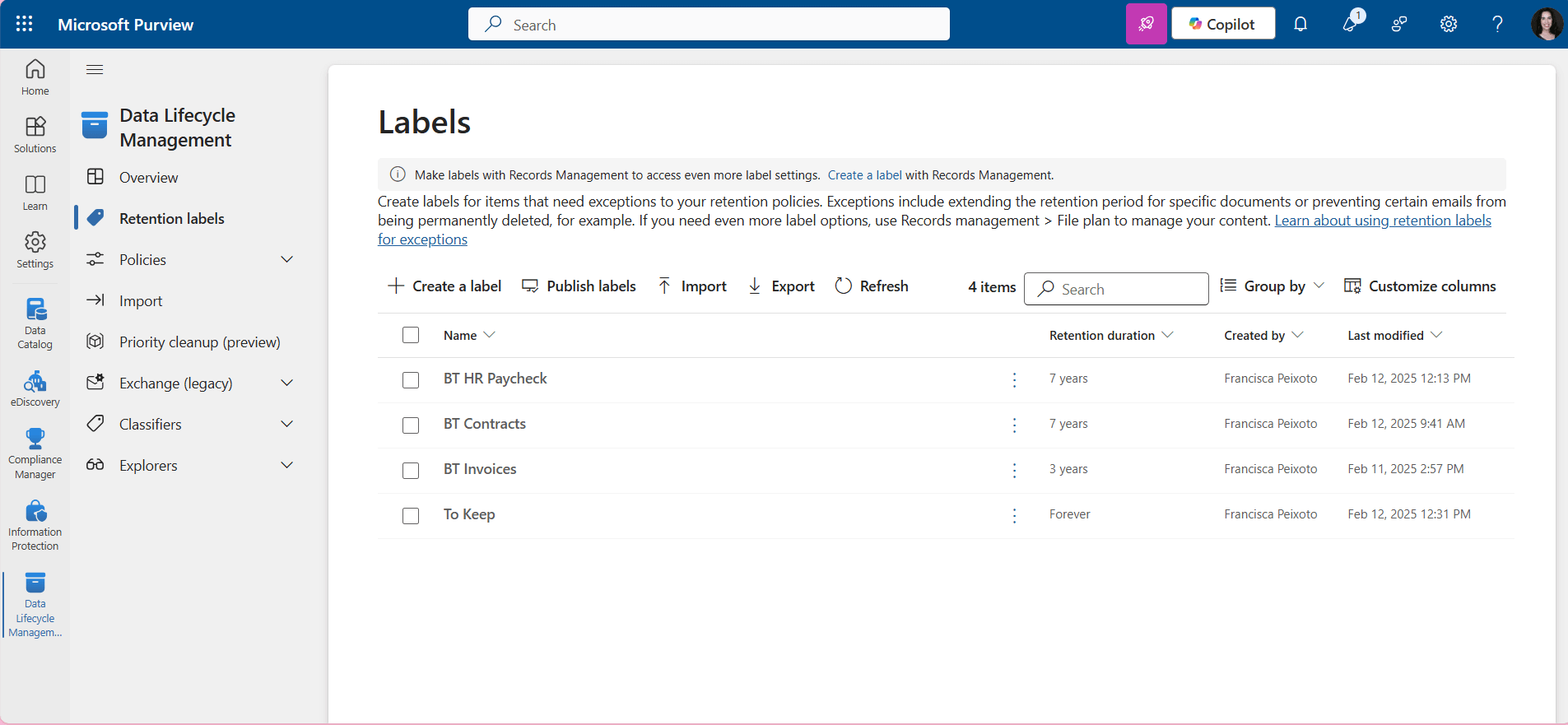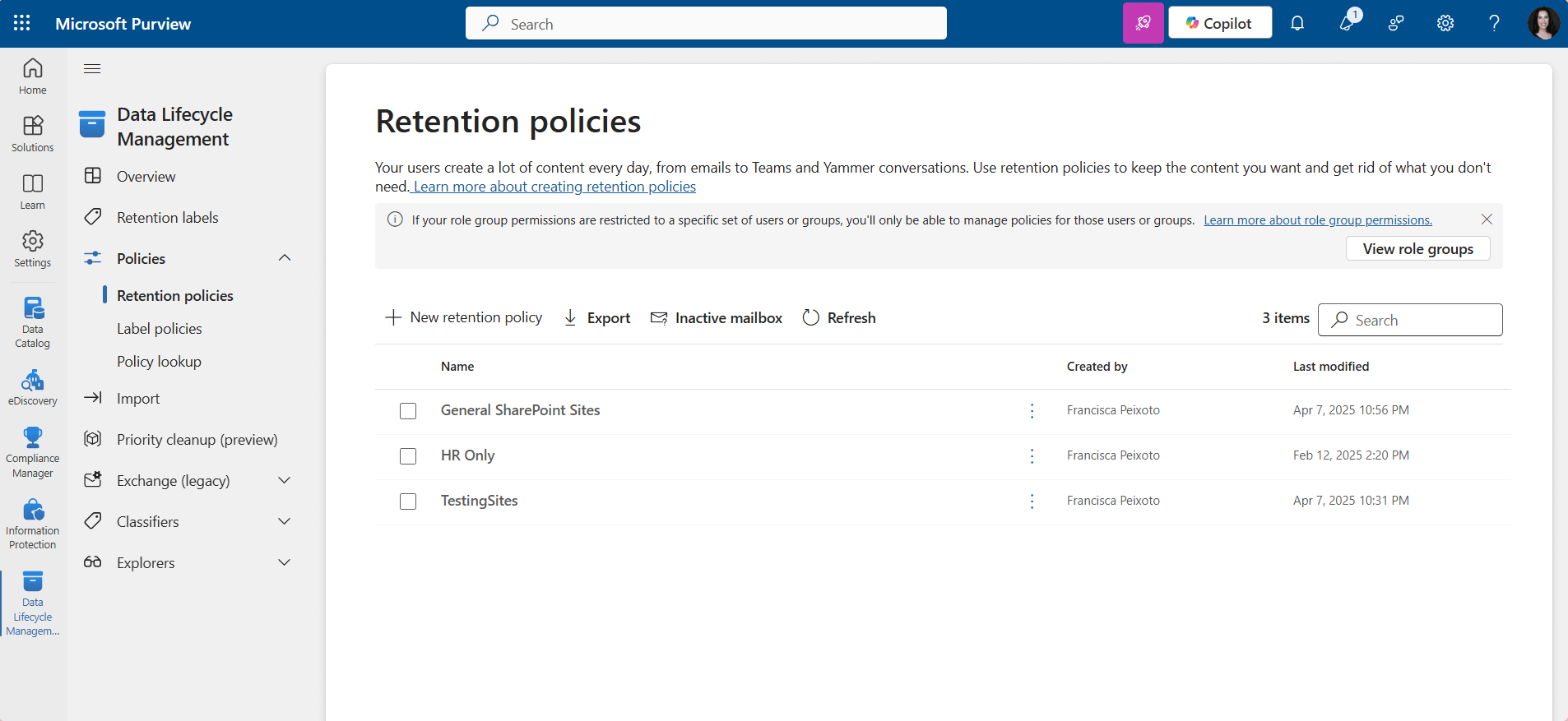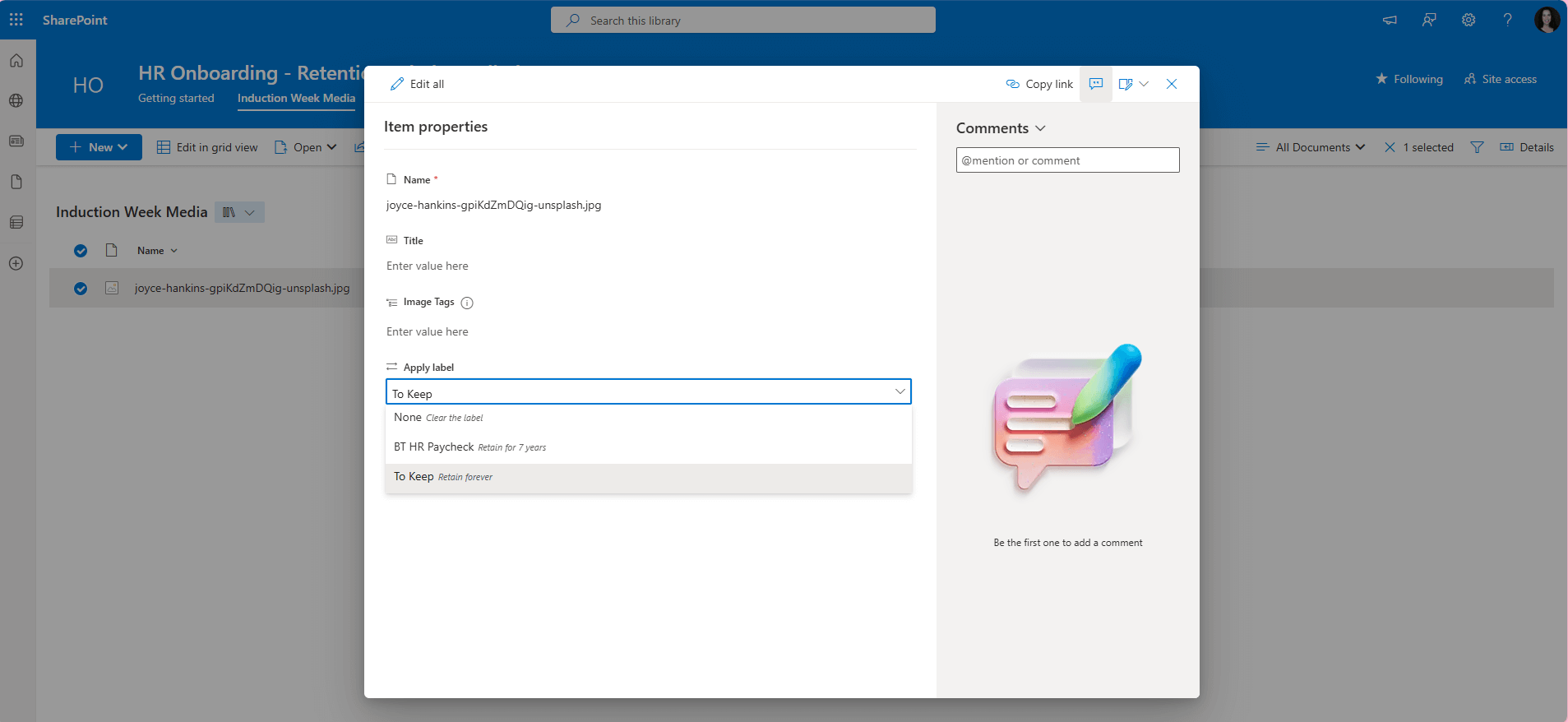Ever feel like your Microsoft 365 tenant is becoming a digital junk drawer? You're not alone. As organizations increasingly rely on SharePoint, Teams, and other Microsoft 365 tools, managing the lifecycle of all that content becomes both crucial and challenging.
Let's chat about how retention labels can bring order to the chaos—without requiring you to become a full-time digital librarian.
Why Data Lifecycle Management Matters
Think about your physical office for a moment. You wouldn't keep every document, folder, and sticky note forever, right? The same logic applies to your digital workspace.
Effective data lifecycle management helps you:
- Reduce storage costs by automatically archiving or deleting outdated content
- Improve productivity by making relevant information easier to find
- Maintain compliance with regulatory requirements
- Minimize security risks by reducing your overall data footprint
Understanding Retention Labels vs. Retention Policies
Before diving deeper, let's clarify the difference between two key Microsoft 365 governance tools:
Retention Labels
Retention labels are item-level tags that:
- Apply specific retention settings to individual pieces of content
- Travel with the content if it's moved around your tenant
- Allow for different retention periods for different types of content in the same location
 Image 1: Create Retention Labels in Microsoft Purview
Image 1: Create Retention Labels in Microsoft Purview
Retention Policies
Retention policies, on the other hand:
- Apply broadly to entire locations (like a SharePoint site or Teams team)
- Work in the background without requiring user action
- Enforce a single retention period for all content in that location
 Image 2: Create Retention Polices in Microsoft Purview
Image 2: Create Retention Polices in Microsoft Purview
Combining Labels and Policies
The real power comes when you use both approaches together:
- Create retention policies as a baseline
- Work in the background without requiring user action
- Use retention labels for exceptions or specific document types
When both exist, the longest retention period typically wins. Labels usually take precedence over policies when there's a conflict in actions.
Read more on The principles of retention, or what takes precedence?
The Challenge of Manual Labeling
While retention labels are powerful, they come with a significant challenge: user adoption. Relying on busy employees to consistently apply the right labels is often a recipe for inconsistent governance. Common issues include:
- Users forgetting to apply labels altogether
- Incorrect labels being applied due to confusion
- Inconsistent labeling across teams
- New employees unaware of labeling requirements
And while there are ways to automatically assign labels to content that matches specified conditions (specific types of sensitive information, specific keywords or searchable properties) this isn't supported for regulatory records or to apply default labels for an organizing structure such as a document set or library in SharePoint.
 Image 3: Manually apply Retention Label to individual items
Image 3: Manually apply Retention Label to individual items
How Automate365 Streamlines Retention Management
This is where tools like BindTuning's Automate365 can make a tremendous difference in your governance strategy:
Default Labels Per Library or List
Automate365 allows you to:
- Define default retention labels that automatically apply to all content added to specific lists or libraries
- Ensure consistent governance without requiring manual user action
- Tailor retention approaches to different content collections based on their purpose
Template-Based Governance
With Automate365's templating capabilities, you can:
- Create standardized retention configurations for different types of sites
- Deploy consistent governance settings when provisioning new workspaces
- Save significant time when setting up proper retention
 Image 4: Create a Template with predefined default Retention Labels
Image 4: Create a Template with predefined default Retention Labels
Simplifying the User Experience
By handling retention behind the scenes, Automate365:
- Reduces the governance burden on end users
- Increases compliance with your retention requirements
- Allows teams to focus on their work rather than records management
Getting Started Today
The journey to proper data lifecycle management doesn't happen overnight. Start small:
- Audit your current situation
- Develop a clear retention schedule for different content types
- Implement a basic set of retention labels and policies
- Consider tools like Automate365 to apply default labels to libraries and lists
- Gradually expand your governance approach
Remember: the goal isn't perfection; it's improvement. Even a simple retention strategy is better than none at all.










